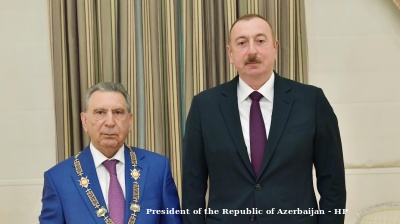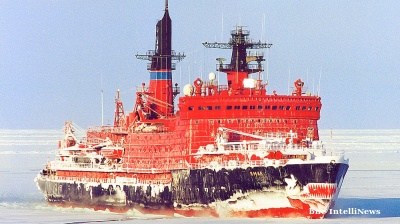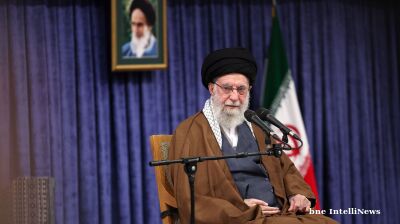The words “Iranian economy” and “collapse” are presently so closely linked in the media narrative that the imminent collapse of Iran has become one of those truths that hardly need stating. The numbers, though, tell a different story.
We can start with the big picture, and kill an early assumption. Iran is not a hydrocarbon economy. Even in their un-sanctioned state hydrocarbons value-add rarely rose above 20% of GDP and for most of the time hydrocarbons contributed around 15% of GDP – far lower than the 40-80% levels which prevail in the true hydrocarbon economies of Saudi Arabia, Qatar, Kuwait and Venezuela. In its (present) sanctioned state hydrocarbons account for less than 10% of Iran’s GDP. To put this in perspective, 12% of the UK’s economy is generated by tourism, but no-one would describe the UK as a tourist-dependent economy.
Not a small economy
Another erroneous assumption is that Iran has a small economy. Its exact value is hard to pin down, since wild exchange rate swings drive it up and down in dollar terms, and those terms are confused by a large difference between official and black market exchange rates, but its dollar value today sits at somewhere around $450bn per year. That makes it larger than Denmark, Israel, Egypt and Belgium, about the same size as Argentina, and about half as large as Turkey and Saudi Arabia. Iran has the potential to be a significant economic and geopolitical actor both regionally and globally, hovering on the edge of the G20.
The next myth to bust is the idea that Iran’s economy struggles to grow. Here too, it is difficult to get a clear picture, because GDP growth took a large leap in 2016 after sanctions were lifted, then turned negative after Mr Trump unilaterally abrogated the JCPOA and re-imposed sanctions in May 2018, but World Bank data suggests that growth returned in 2020 despite US sanctions and the impact of coronavirus (COVID-19), to 1.7%. 1.7% may not look like a spectacular growth rate, but it compares well with the negative GDP growth experienced by developed economies even now, a year and a half after the arrival of COVID-19.
Capital expenditure is strong
One source of Iran’s above-peer performance is not hard to find: gross fixed capital formation (the sum total of investment in capital goods in an economy – broadly national capex) was above 30% as recently as ten years ago, and in spite of the pandemic is still well above 20%. Ten years ago US GFCF was 18%, and while it has recovered it is still lower than Iran’s, as is GFCF in the EU, Saudi Arabia and Israel. GFCF is the most significant driver of GDP growth after population changes and urbanisation, and Iran’s GFCF has been largely unscathed by either sanctions or COVID. A key support for GFCF is the national savings rate – the percentage of GDP saved in one way or another. Iran’s GNS rate is around 38% (source: CIA). Compare that with the EU (22%), the UK (13%) and the US (18%). In GNS terms Iran is a peer of China (44%), Singapore (43%), Switzerland (35%) and South Korea (35%). Once the COVID-19 effect passes Iran’s non-oil GDP should start growing again at a trend rate of 3-4% – a rate that most of the EU would sell their grannies for.
Given its perception as a profligate theocracy, surely Iranian government net debt must be very large? Not when we look at the data. In 2017 the CIA reported government debt as 37% of GDP, one of the world’s lowest levels, and a level far lower than Western debt levels of 100-200% of GDP (240% for Japan).
But there are two big problems
The picture that emerges from the data (and equally from first-hand accounts of foreign visitors to Iran) is of an economy not even close to collapse. But not all in the Iranian garden is rosy – the economy is wrestling with two substantial problems.
The first of these is a sharp inflationary spike that set in after May 2018. Since then Iran has experienced consumer price increases of around 30% per year. Where has that come from? At first sight Iran’s inflation presents a puzzle. CIA data reports 2017 government receipts at $74bn, with spend of $84bn. Most Western (and eastern) states would be ecstatic to see government taking only 17% of GDP as revenue, and be happy to have a government deficit of only 2.5% of GDP, so where does that inflation come from?
Data published by the Turkish academic Aidin Akhavan at Istanbul Bilgi University reveals the split of Iran’s government revenue between taxation and oil sales. In 2016 government revenue totalled IRR1.8 quadrillion ($31.1bn at current exchange rates); IRR0.8 quadrillion of that came from oil sales. After the resumption of US sanctions in May 2018 government spending continued but oil revenues fell. The size of that fall is not in any public domain we can find, but we can estimate that government oil revenues probably fell by three quarters, leaving an IRR0.6 quadrillion per year gap – about 6% of GDP. That’s a lot of cash to borrow from the private sector, even in a normal economy.
Money creation accounts for two thirds of inflation
In 2016 Iran’s total Broad Money supply in 2016 was IRR11.9 quadrillion (World Bank). The World Bank does not publish figures for M1, but CEIC does, at least to June 2019. That data suggests that M1 (notes and coin in circulation) rose by 70% from $45bn to $74bn in the year after sanctions returned. Analysis is difficult with wildly varying exchange rates, both official and unofficial, but it seems reasonable to convert this increase into a roughly IRR1 quadrillion increase in M1. It looks very much as if Tehran chose to solve its budget gap with its printing press.
If Tehran continued to solve its budget gaps by printing money, that would see some IRR3 quadrillion enter the money supply from May 2018 to now, providing 25% of the roughly 100% inflation seen over that period. With more cash flowing around it also seems likely that the velocity of money increased too (when inflation is raging people don’t hang on to their currency for long), perhaps adding one third to that 25%.
The rest comes from currency depreciation
Currency emission is too small to have accounted for all of that 100% inflation. About a third (again not exactly definable) has been caused by exchange rate depreciation caused by the 2018 sanctions. The source of the remaining third is misty. Both components may be larger than we’ve estimated, or the effect of money velocity might be larger, or non-cash money creation might be responsible, but the source probably matters less than the effect.
Inflation at 30% per year for three years is certainly an economic problem, but it does not amount to hyperinflation, and nor does it precipitate economic collapse. The danger for Tehran is that inflation becomes a self-feeding monster, a vicious cycle of expectation driving outcomes driving more expectation. That would serve Washington’s clear hope that inflation would precipitate political collapse of the Islamic regime.
Inflation was a choice, but why?
If inflating the economy is so risky, why would Tehran choose a risky inflation over other solutions to its budget gap?
We can speculate on the answer to that question. It may flow from class warfare. Inflation hurts people holding large cash balances and people who want to consume imported goods. Those categories of people are concentrated in Iran’s secular, educated prosperous “1%”, who are also the source of potential opposition to the present regime. Iran’s poor, who hold little cash and consume few imported luxury foods or other goods, are hurt less by inflation. Indeed, if Iran’s poor are debtors (as the poor usually are), inflation will help them.
It certainly flows from a desire to protect Iran’s foreign currency reserves – better to let the rial depreciate than spend precious hard currency defending it – and in any case Tehran cannot access or use most of its reserves because they are locked up by sanctions. Currency depreciation punishes consumers of imported goods without the politically messy business of taxing or controlling that consumption. Remember that Iran is a very low-taxed economy with an average tax take of around 17% of GDP.
Government’s hard currency hopes make inflation a blessing, for the government
Thirdly, Tehran might have calculated that when flows of hard currency into its coffers restart (with the Iran-China deal, for example, discussed below) it will not hurt the government if the domestic purchasing power of those flows has doubled in Rial terms.
Another possible reason is that Tehran has made a cold calculation that high inflation increases tax receipts (generally denominated in percentages of rising prices and values) while not increasing government spends (denominated annually in nominal amounts, which depreciate with inflation). Thus Tehran is hitting or exceeding its budgeted state income. What this amounts to is a stealth tax on recipients of state budget expenditures – the poor – which can be blamed on sanctions and the United States.
Unemployment is the other problem
Iran’s poor suffer from Iran’s other economic problem – unemployment. Iran has historically suffered from high unemployment – 10-11%. The West sees this as a welcome crisis, one able to spark mass opposition to the Islamic regime. Iranians do not share that view. Unemployment has been a fact of life in Iran for a generation, but is now falling: recent figures for the first half of 2021 show unemployment at 9%.
What Washington hopes is a crisis for Iran is not regarded as a crisis at home. Unemployment figures in the G20 are not dissimilar, with double figures now in the US, and approaching double figures in Europe. European data conceals substantial hidden unemployment that is either re-classified as voluntary or simply removed from the sum by one means or another. Iran’s unemployment is a problem but not a crisis.
Support for the regime holds up
More poverty for the poor is less of a political problem in Iran than it would be in an irreligious Western economy, for Iran’s poor are also Iran’s devout, for whom an Islamic regime is intrinsically attractive. That is not just an opinion. Within Iran there is one organisation which provides tangible evidence that the poor, especially poor young men, are broad supporters of the Islamic state: the Basij. Forming a kind of hybrid militia, religious police, auxiliary security force, state informant brigade and a force of general busybodies, the Basij is currently reported to have some 23mn members – which means pretty much every adult male in Iran between the ages of 20 and 60. The anti-regime agitation that we see in the Western media is coming not from this very large majority but from that small secular noisy urban elite, that pesky 1% again, in Tehran or abroad. A cold truth in Iran is that most Iranians are willing to suffer inflation and poverty in support of their (Islamic) state.
So far, the strain of the 2018 sanctions has been a problem but not a crisis. The inflation game is not one that can be played for ever, or even for very much longer, in case it becomes self-feeding and does indeed turn into hyperinflation. One reason why Tehran appears less worried than we might expect is the clear and present hope that things will get better sooner rather than later. The Trump sanctions hit hard in 2018 partly because they rudely interrupted a positive growth track, and partly because they obtained widespread (if reluctant) compliance from China and Russia. Three years on and that compliance is waning.
Iran’s reaction to US sanctions is to turn East
As the United States has moved from anxiety about China’s rise to outright hostility, and as Russia has gained substantial confidence from a suite of military and geopolitical advances that have pushed the US and its Nato allies onto their back feet, both countries are now happy to trade quietly with Iran, notwithstanding sanctions. Beijing’s overt approach has been to comply with UN-defined sanctions but not with unilateral American ones. The former were watered down to practical ineffectiveness by China in the Security Council, especially UNSCR 1929, and are not much of an obstacle to trade. For example, China has sidestepped oil trade restrictions by buying “fuel oil”, not technically included in “oil” in the relevant sanctions wording.
Now, a few years on, China has stepped well beyond that semi-compliant stance. In March of 2021 Iran and China signed a 25-year “Cooperation” agreement, with a headline value of $450bn. In reality “co-operation” here means Iran will co-operate in supplying China with oil, while China co-operates by paying for it in hard currency. The sums are not hard to calculate. 1mn barrels per day (bpd) of oil for 25 years at an average price of $50 comes to a tad over $450bn. The deal was window-dressed as an investment deal, but that is just for the passers-by. In practice, the flow of oil to China will probably exceed 1mn bpd as soon as the parties have worked out how to ship it without triggering attacks on Chinese assets by the US Office of Foreign Assets Control, but that is probably not beyond the wit of either side to effect.
The proceeds, $20bn per year for Iran’s hard currency flows and state revenue, will provide a useful pot with which to replace money-printing and to promote job creation for those unemployed Basijis. Along the way, China will undoubtedly make some real investments in Iran. Likely categories will include oil infrastructure, of course, plus railways, some telecoms, and a port. The latter will have a PLAN facility included – the Economist revealed that the deal explicitly allows for 5,000 Chinese uniformed personnel to base in Iran. Other possible sectors include a possible LNG liquefaction plant, and the lease provision of civil airliners. It will not escape US eyes that much of that might have come from US suppliers in other circumstances.
Another self-inflicted US geopolitical wound
US strategy towards Iran, whose objective is to topple the Islamic regime by fomenting mass dissent among the poor and unemployed using sanctions as the catalyst, looks like being as successful as US strategy in Afghanistan. Iran, whose economy is demonstrably considerably healthier than the consensus suggests, and much healthier than some major economies we could mention, has been driven firmly into the China/Russia camp, where it will prosper. To add insult to the self-inflicted injury, those barrels of oil will not be traded in US dollars but in yuan, another step in the slow but steady de-dollarisation of world trade, which is already ringing alarm bells in the offices of longer-sighted US strategists.
Trapped by their own rhetoric the US, Israel and the E3 are probably now too late to prevent Iran from becoming a firm member of the Sinosphere, with an economy that is stubbornly refusing to lie down and die.
Features

Andaman gas find signals fresh momentum in India’s deepwater exploration
India’s latest gas discovery in the under-explored Andaman-Nicobar Basin could become a turning point for the country’s domestic upstream production and energy security

The fall of Azerbaijan's Grey Cardinal
Ramiz Mehdiyev served as Azerbaijan's Presidential Administration head for 24 consecutive years, making him arguably the most powerful unelected official in post-Soviet Azerbaijan until his dramatic fall from grace.

Ambition, access and acceleration – Uzbekistan’s Startup Garage opens free academy for entrepreneurship
Aim is to train 50,000 young founders by 2030.

Ukraine’s growing energy crisis promises a cold and dark winter
Since the summer, Kyiv has changed tactics. Given the almost complete failure of Western oil sanctions to curb Russian oil exports, it has been targeting Russian oil refineries. The Kremlin has struck back, targeting Ukraine's power system.




